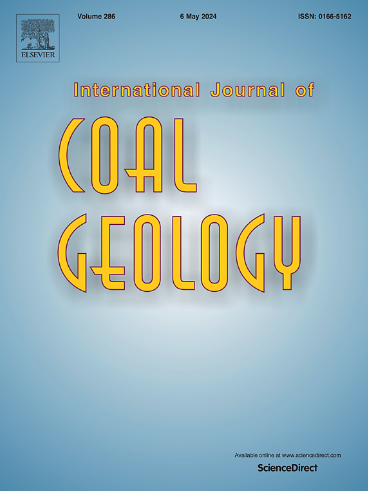Reconstructing the late Permian-early Triassic environment of a coal-bearing succession in the Maniamba Basin, Mozambique (Central Gondwana): A multiproxy palynological and geochemical approach
IF 5.7
2区 工程技术
Q2 ENERGY & FUELS
引用次数: 0
Abstract
The Maniamba Basin is an intracratonic, Karoo-aged basin located in northern Mozambique. Recent studies have reported the occurrence of organic-rich units in the Maniamba Basin, based on Rock Eval data. However, detailed characterization of the palaeoenvironments in the basin is still lacking. In this study, detailed palynological, palynofaciological, XRD and organic geochemical techniques (TOC, total sulphur, and biomarkers) were performed in order to understand past environments that prevailed in the basin. The palynological data reveal the dominance of gymnosperm taxa (striate and non-striate bisaccate, and praecolpate pollen grains) followed by lycopsids, sphenopsids and ferns suggesting hypautochthonous sedimentation characterized by warm and humid palaeoclimate. The palynological results indicate a Permian and Triassic age for the strata. The organic-rich units unveiled a dominance of phytoclasts and palynomorphs, and to a lesser extent by terrestrial and bacterially derived organic matter with no fluorescence, indicating high maturity. Swamp, river and lake dominated environments with oxic-suboxic-anoxic conditions, reflecting shifting of depositional conditions overtime, are inferred in the Maniamba Basin. The deposition and accumulation of organic-rich units were mainly controlled by palaeoredox conditions linked to basin infill during different rifting episodes. The biomarkers mainly consist of saturated compounds that suggest terrestrial organic matter with freshwater algal contribution.
Overall, the integration of mineralogical composition with palynofacies, biomarkers and palynology indicate the presence of potential source rocks that were thermally influenced. Additionally, the petroleum fluids known from younger strata in the Rovuma and Mozambique basins did not show any link with the source rock reported previously.
重建莫桑比克(Gondwana中部)Maniamba盆地晚二叠世-早三叠世含煤演替环境:多代孢粉学和地球化学方法
马尼安巴盆地是位于莫桑比克北部的一个克拉通内卡鲁时代盆地。最近的研究报道了基于岩石评价数据的马尼安巴盆地富有机质单元的存在。然而,对盆地古环境的详细描述仍然缺乏。在这项研究中,通过详细的孢粉学、孢粉面学、XRD和有机地球化学技术(TOC、总硫和生物标志物)来了解盆地过去的环境。孢粉学资料显示,裸子植物类群(纹状和非纹状双足花粉粒,以及前胚层花粉粒)占主导地位,其次是石松类、蕨类和蕨类,表明该地区以温暖湿润的古气候为特征的次原生沉积。孢粉学结果表明该地层属于二叠纪和三叠纪。富有机质单元以植物碎屑和芽状生物为主,陆生和细菌来源的有机质较少,没有荧光,表明其成熟度较高。马尼安巴盆地以沼泽、河流和湖泊为主,缺氧-缺氧-缺氧条件,反映了沉积条件随时间的变化。富有机质单元的沉积和聚集主要受不同裂谷期盆地充填的古还原条件控制。生物标志物主要由饱和化合物组成,表明有淡水藻类贡献的陆生有机质。总的来说,矿物组成与孢粉相、生物标志物和孢粉学的综合表明,存在受热影响的潜在烃源岩。此外,从Rovuma和莫桑比克盆地较年轻地层中发现的石油流体与先前报道的烃源岩没有任何联系。
本文章由计算机程序翻译,如有差异,请以英文原文为准。
求助全文
约1分钟内获得全文
求助全文
来源期刊

International Journal of Coal Geology
工程技术-地球科学综合
CiteScore
11.00
自引率
14.30%
发文量
145
审稿时长
38 days
期刊介绍:
The International Journal of Coal Geology deals with fundamental and applied aspects of the geology and petrology of coal, oil/gas source rocks and shale gas resources. The journal aims to advance the exploration, exploitation and utilization of these resources, and to stimulate environmental awareness as well as advancement of engineering for effective resource management.
 求助内容:
求助内容: 应助结果提醒方式:
应助结果提醒方式:


